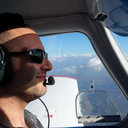Exploring the anti-proliferative, pro-apoptotic, and antioxidant properties of Santolina corsica Jord. & Fourr. (Asteraceae).
کلید واژه ها
خلاصه
OBJECTIVE
The bioactivities of Santolina corsica Jord. & Fourr. n-hexane (EHS) and methanol (EMS) extracts were evaluated in relation to their chemical profile.
METHODS
EHS and EMS were analysed by gas chromatography-mass spectrometry () and high performance liquid chromatography-diode array detection (HPLC-DAD), respectively. Antioxidant activity was determined by β-carotene bleaching, Ferric Reducing Activity Power (FRAP), 2,2-diphenyl-1-picrylhydrazyl (DPPH), and 2,2'-azino-bis-3-ethylbenzthiazoline-6-sulphonic acid (ABTS) tests. Nitric oxide (NO) production was assessed in LPS-stimulated RAW 264.7 cells. Anti-proliferative activity was evaluated by MTT assay on A549, HeLa, PC3, MCF-7, MDA-MB-231 cancer cells, and non-tumorigenic MCF10 A cells. Cell motility, migration and invasion were assessed by wound-healing scratch, migration and invasion assays, respectively. DNA fragmentation was tested by TUNEL assay. Cells morphology was studied by phase-contrast microscopy. Procaspase-8, -9, poly (ADP-ribose) polymerase and COX-2 expression levels were evaluated by immunoblotting analysis.
RESULTS
Kaempferol-3-O-glucoside (5878.67 mg/100 g of extract), chlorogenic acid (746.11 mg/100 g), and rosmarinic acid (550.16 mg/100 g) were the dominant EMS constituents. EHS showed myrcene (18.86%) as the main compound, followed by palmitic acid methyl and ethyl esters (9.35 and 9.16%, respectively), β-phellandrene (8.48%), and ar-curcumene (5.63%). Both extracts showed promising anti-proliferative activity on all tested cancer cells, without inducing cytotoxicity in non-tumorigenic cells MCF-10 A. Moreover, extracts inhibited motility, migration, and invasion of MDA-MB-231 cells, inducing apoptosis. EHS decreased NO production, showing anti-inflammatory activity.
CONCLUSIONS
S. corsica extracts might be potentially useful in cancer treatment, since reduce invasive and migratory potential of MDA-MB-231 cells triggering apoptosis.



